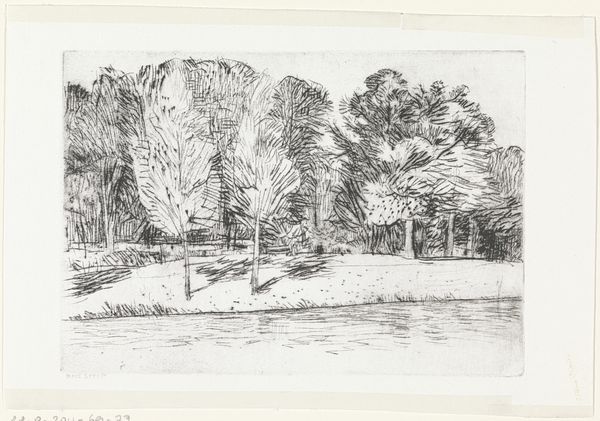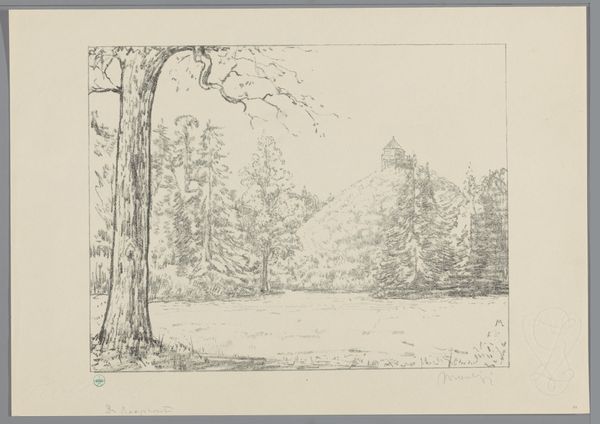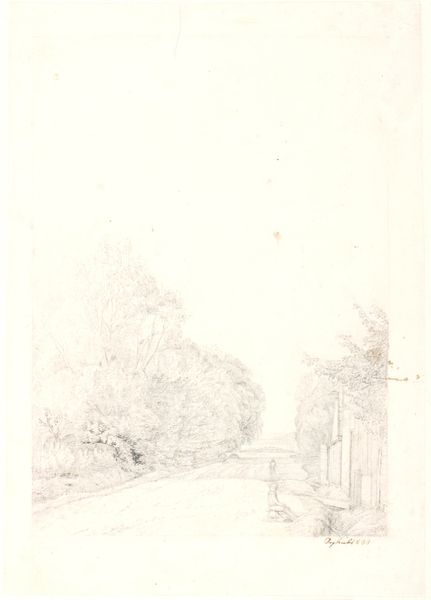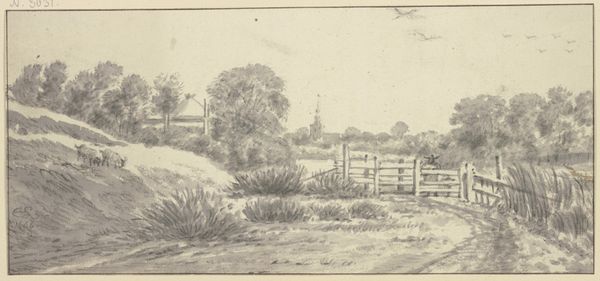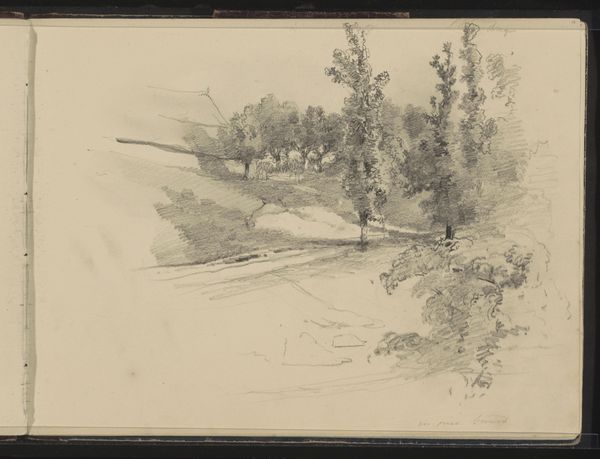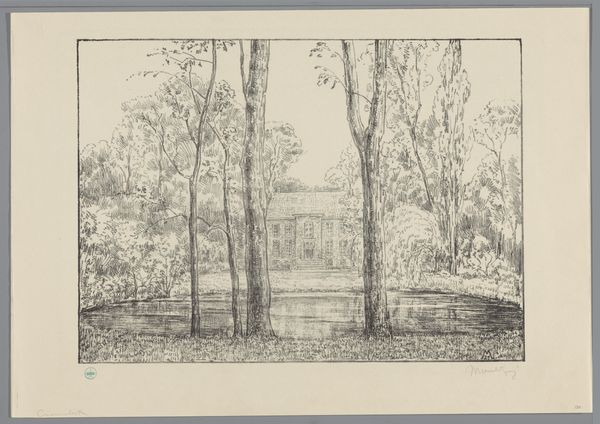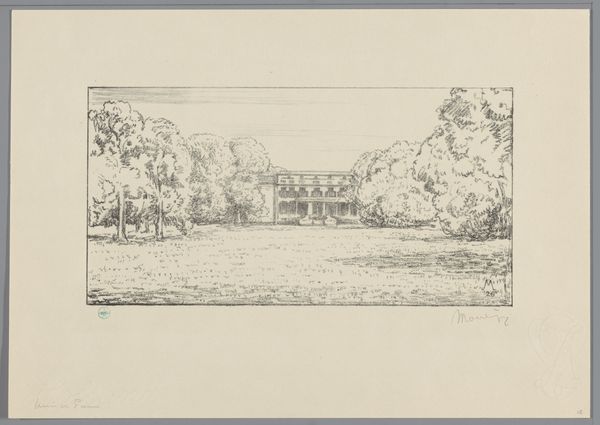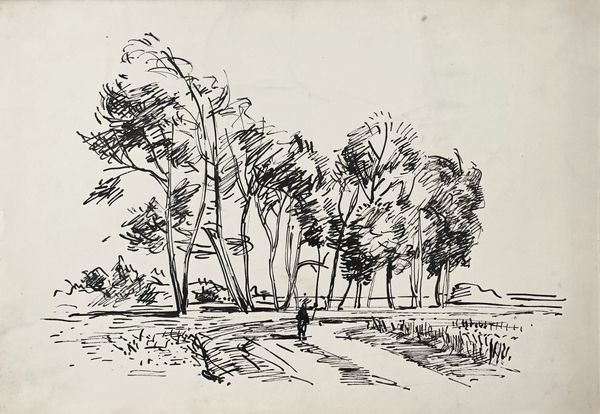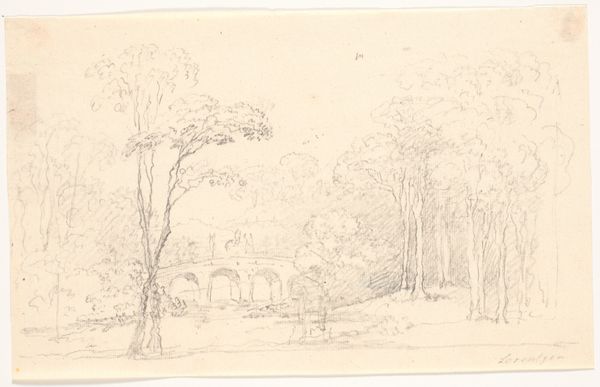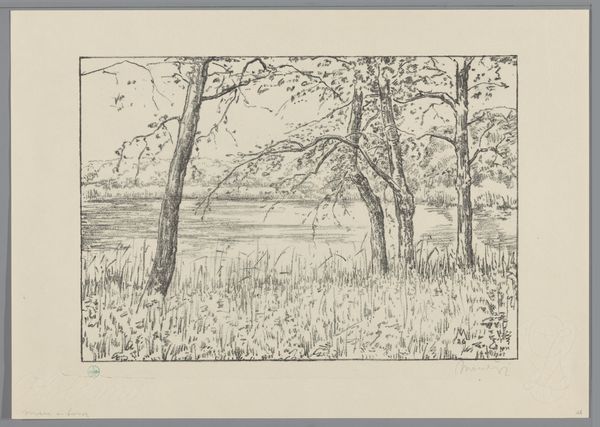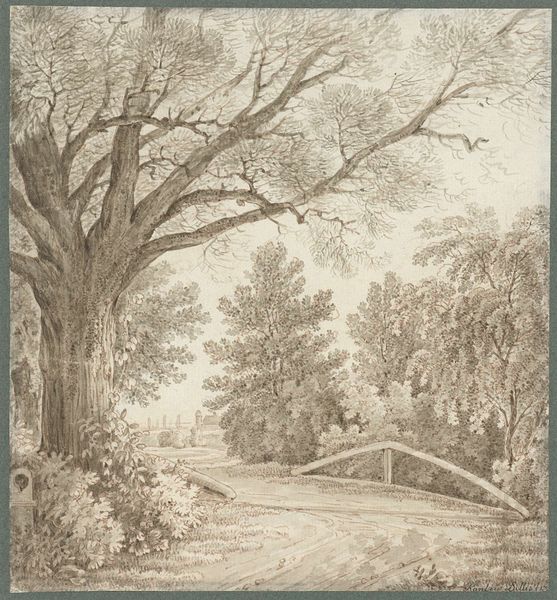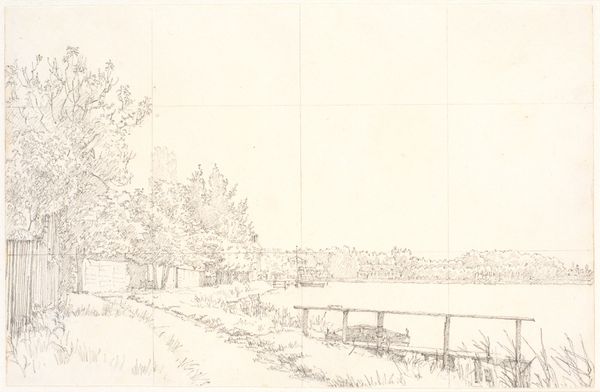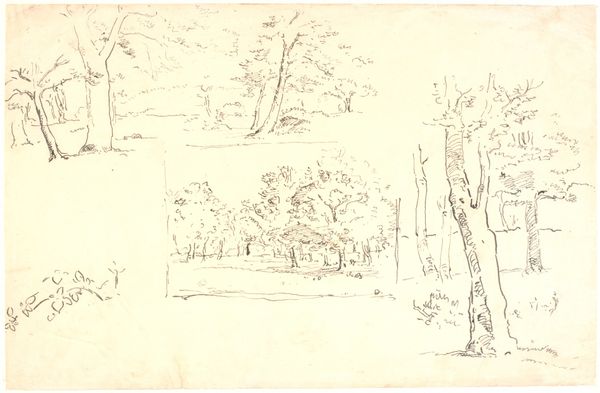
drawing, pencil
#
drawing
#
landscape
#
pencil
#
academic-art
#
modernism
Dimensions: height 296 mm, width 422 mm
Copyright: Rijks Museum: Open Domain
Curator: Standing here before Simon Moulijn's 1926 pencil drawing, "Bordestrap op landgoed Clingendael," now residing at the Rijksmuseum, I find myself immediately struck by its sense of tranquility. What's your take? Editor: The precision is astonishing. Look at the meticulous rendering of stone, vegetation, and sky. You can almost feel the textures, imagine the labor required to translate this landscape through the humble pencil. Curator: Moulijn's depiction provides a crucial window into the Dutch landed gentry of the time. The garden is meticulously designed; its ordered formality reflects the social structures of the era, reminding us of privilege and power rendered invisible by beauty. What ideological framework do you see present? Editor: Ideological frameworks are fascinating. For me, this scene embodies human engagement with the landscape. These stone pathways—quarried, cut, assembled. The plants: pruned, manicured, positioned. All representing labour shaping the environment to produce leisure and privilege. Curator: Right, but the leisure produced by this place comes from a very specific history, the kind tied to social mobility for men in positions of governance and international expansion in the wake of WWI. Editor: You see the social critique explicitly, which is valid, but what intrigues me are those visible actions and interactions that create landscapes – of which this rendering freezes for a moment. Take for example the linear mark-making mimicking physical acts of shaping matter. The material implication. Curator: I appreciate that tension between art and craft. Even that "humble" pencil is produced by someone. And the resulting artwork gets classified, elevated within these walls, while simultaneously being kept distinct from work by female designers or Indigenous land managers... Editor: Yes, its role in our cultural classifications certainly is multi-layered. Considering the sheer amount of strokes alone tells the story! It allows us to see production. Curator: A reminder that what we deem "landscape" and the associated history has often been sanitized of labor and inequalities, and this drawing makes me want to further interrogate this historical site in ways I may have overlooked before. Editor: Absolutely. It's a privilege to consider these layers. This process, now finished. This moment of production rendered forever in graphite, allowing us now to see it—again.
Comments
No comments
Be the first to comment and join the conversation on the ultimate creative platform.
